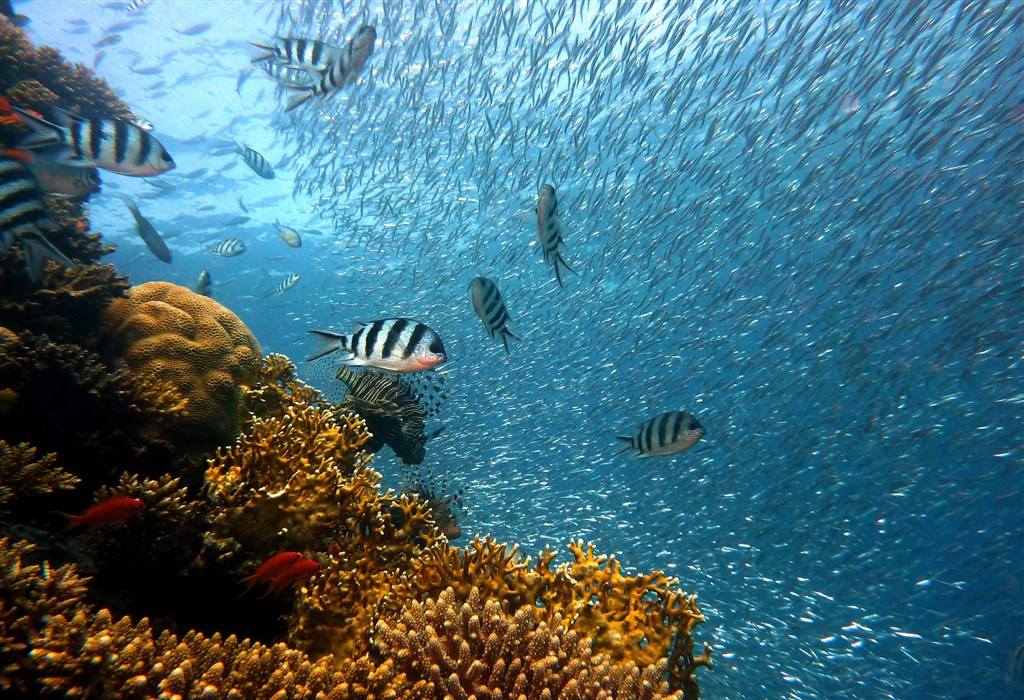It was a world independent of sunlight, oxygen, or anything else normally associated with life. This was a living system based not on photosynthesis but on chemosynthesis, an arrangement that biologists would have dismissed as preposterous had anyone been imaginative enough to suggest it.
那個世界獨立于陽光����、氧氣和其他通常與生命有關的任何東西。這種生命體系的基礎不是光合作用,而是化學合成�����。要是哪個想像力豐富的人提出這種安排��,生物學家們肯定會認為是很荒謬的�����。
Huge amounts of heat and energy flow from these vents. Two dozen of them together will produce as much energy as a large power station, and the range of temperatures around them is enormous. The temperature at the point of outflow can be as much as 760 degrees Fahrenheit, while a few feet away the water may be only two or three degrees above freezing. A type of worm called an alvinellid was found living right on the margins, with the water temperature 140 degrees warmer at its head than at its tail. Before this it had been thought that no complex organisms could survive in water warmer than about 130 degrees, and here was one that was surviving warmer temperatures than that and extreme cold to boot. The discovery transformed our understanding of the requirements for life.
噴氣孔釋放出大量的熱量和能量。20來個這類噴氣孔產生的能量相當于一家大型發電廠;周圍溫度的變化幅度也很大����。噴口的溫度可達400攝氏度����,而兩米外的水溫也許只有零上二三攝氏度。他們發現有一種名叫“阿爾文蟲”的軟體蟲就生活在邊緣地帶,頭部的水溫比尾部的水溫要高出78攝氏度。此前大家認為,復雜的生物無法在54攝氏度以上的水里存活,而這里卻有一種軟體蟲��,它們能同時生活在高于那個溫度的與極冷的水里。這一發現改變了我們對生命需求的認識。

It also answered one of the great puzzles of oceanography—something that many of us didn't realize was a puzzle—namely, why the oceans don't grow saltier with time. At the risk of stating the obvious, there is a lot of salt in the sea—enough to bury every bit of land on the planet to a depth of about five hundred feet.
它還回答了海洋學的一大難題——許多人不了解的問題�����,就是一個難題——即�����,海洋為什么不是越來越咸。有一點是顯而易見的����,我也不怕說一說:大海里有許多鹽——多得能把本星球的每一小塊陸地埋起來�,埋到大約150米深��。
來源:可可英語 http://www.ccdyzl.cn/Article/201804/550671.shtml











